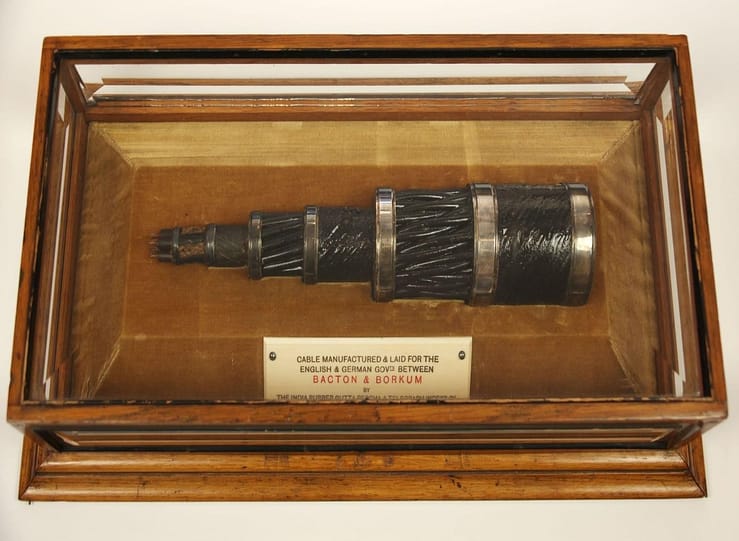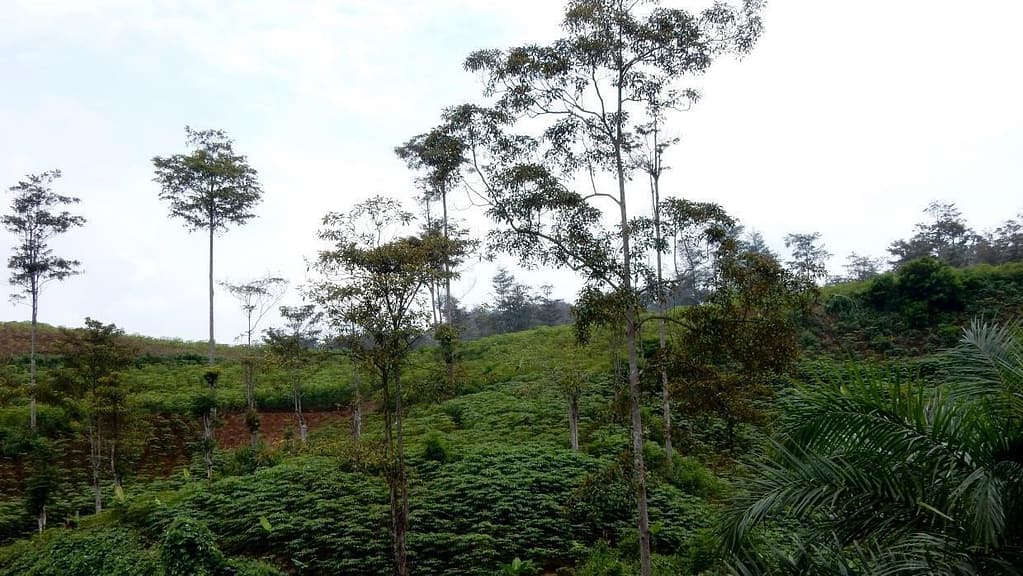Gutta-Percha: Ecological Impacts and Unsustainability
The Gutta-percha name is derived from a Malaya word “Getah” translated as ‘Latex’; “Percah” is a local name for ‘palaquium gutta’ and refers to a natural plastic, electrically nonconductive, thermoplastic latex produced from the sap of a certain Southeast Asian tree. During the second half of the 19th century, gutta-percha was used for many domestic and industrial purposes, and it became a household word. In particular, it was needed as insulation for underwater telegraph cables which led to unsustainable destruction and collapse of supply. Gutta-percha latex is characterized through electrical properties as biologically inert, resilient, and a good electrical insulator with a high dielectric strength. It served as the insulating material for early undersea telegraph cables, including the first transatlantic telegraph cable.
In 1850, the first international cable was laid between England and France by telegraph engineers, Brett brothers Jacob and John, of the English Channel Submarine Telegraph Company. Messages were transmitted through the submarine cable from Dover to Calais, the narrowest point in the English Channel.
Gutta-Percha in Telegraph Industry
The conception of the telegraph network around the world with imperial capitals as important node points was evidently a huge industrial undertaking. This complex feature involved engineering, manufacturing and installation of hundreds of thousands of miles of cable, much of which was laid across the oceans.

The development of submarine telegraphy was by no means straightforward; there were many scientific and production problems to solve including issues relating to the study and use of materials. After many expensive cable failures, a reliable method of submarine cable production was developed with gutta-percha insulation. A natural plastic, gutta-percha was affirmed as the key to the success of the new system which proved indispensable as insulation for the submarine cables.
Image: Sample of White Gutta Percha used as insulation for undersea cables, PK Archive Objects
Native Flora of tropical world
Gutta-percha can be derived from several tropical trees of the Sapotaceae genera Palaquium and Payena, especially Palaquium gutta. The trees are natural inhabitants of Southeast Asia. This plant is native to Sumatra, Peninsular Malaysia, and Singapore. However, Gutta-percha is now believed to be increasingly rare and almost extinct in Indonesia. In Malaya, there are over 100 species of trees belonging to the Sapotaceae family, and all of them produce gutta percha. In most cases, however, gutta percha is mixed with various resinous substances and is therefore of too little value to be worth collecting. A few species, mainly the genera Palaquium and Payena, have gutta present in sufficient amounts to be of commercial importance. The best grade of gutta percha is produced by Palaquium gutta, also known as Isonandra gutta or getah taban merah, in the Malay Peninsula.

A Cable Manufactured by The India Rubber, Gutta Percha & Telegraph Works Co. PK Collection
Imbalance and Unsustainability
Gutta-percha had properties which could be exploited mainly its hard plasticity, electrical insulating properties and its extremely low coefficient of thermal expansion/contraction. Together with its softening at easily attainable temperatures, it was perfect for commercial usage. Moreover, it is very stable underwater and the cables lasted many years thus the high market demand. However, inefficient and unsustainable methods of extraction lead to the destruction of trees on a large scale. The imperial authorities and the telegraph companies were criticised for their lack of concern about the future of this precious tropical rainforest resource and how it was being ruthlessly exploited. The wild trees that provided gum were almost extinct by the late nineteenth century, causing a flutter of panic in an industry that had taken it for granted.

Planet PK is an environmental programme at PK Porthcurno with a vision to ensure wildlife and habitat protection in a most sustainable way. It emphasises our duty as an individual, community, society and the responsibility we have to conserve natural heritage, protect wildlife and provide for a sustainable environment.
Image: Remnants of a Gutta Percha plantation in western Java, Indonesia, in Jan. 2016; Photo by Peter Wilkie
It is high time now to put analysis of environmental impacts at the centre for every development planning process. This is most relevant in a modern scenario whereby sustainable development goals are starting to come up in all domains as an immediate policy framework for most countries, multilateral forums and private enterprises.
Header image A Section of the First Cable Laid from England to France (Dover to Calais) 1850

Author: Prabhat Rathva
Prabhat is an International Research Intern based in Mumbai, India. He is studying Engineering at IIT Bombay
Find Prabhat’s related work here: Tropical Plantations: Extraction, Natives and Regulating Laws
